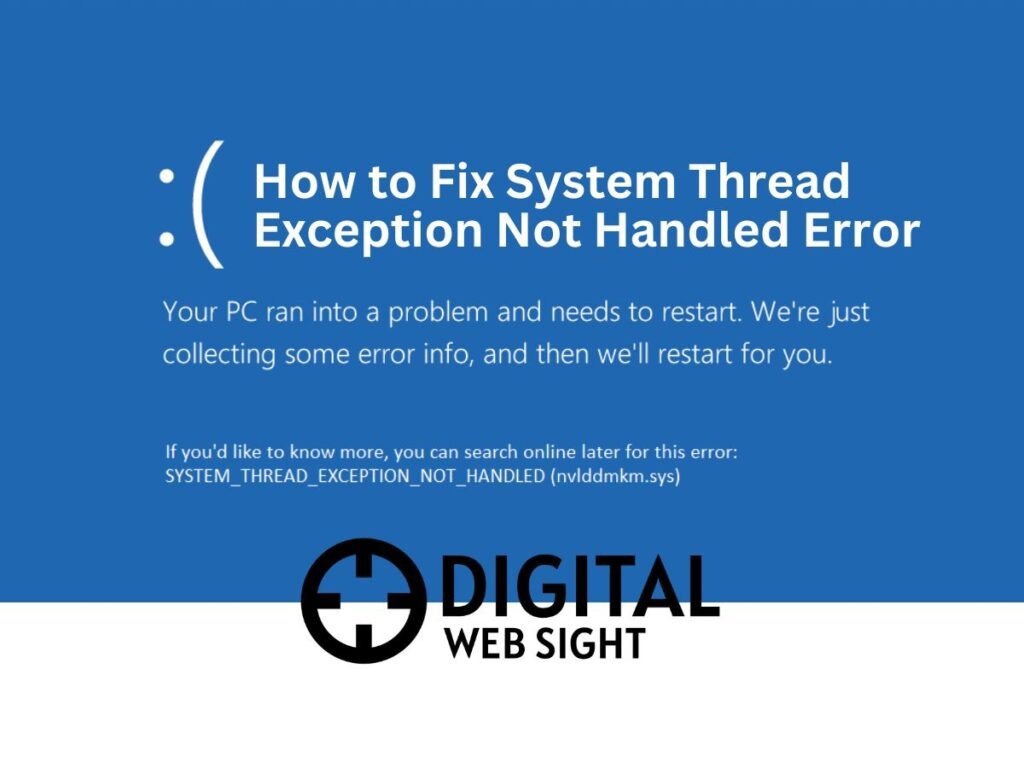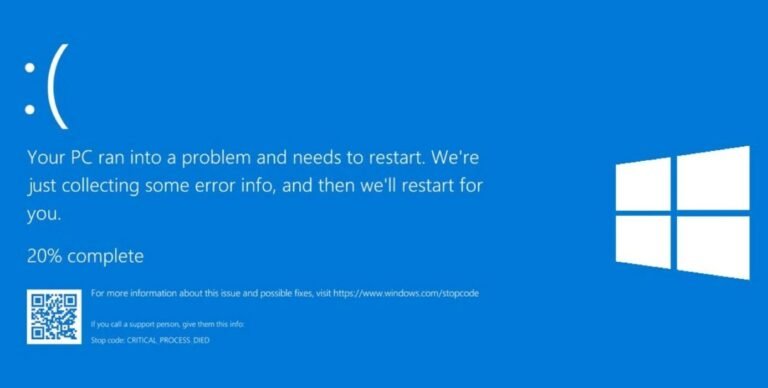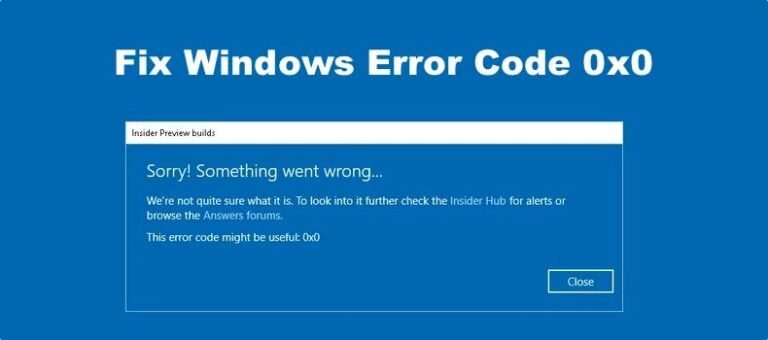Easy and Simple Method System Thread Exception Not Handled Error in Windows 10: Troubleshooting and Repairing the Issue.
On Windows 10, the Blue Screen of Death (BSOD) error known as “System Thread Exception Not Handled” is one of the possible causes of the operating system to crash. This error message indicates that a system thread attempted to handle an exception that the operating system was unable to handle successfully. When it is encountered, it has the potential to cause your computer to crash and restart, which will disrupt your work and may even result in the loss of data. In this post, we will discuss the significance of the error message “System Thread Exception Not Handled,” as well as its potential causes and a number of different troubleshooting procedures that can assist you in fixing the problem.

Understanding System Thread Exception Not Handled
An instance of the Blue Screen of Death (BSOD) issue known as the System Thread Exception Not Handled error transpires in the event that a system thread comes across an exception that is not handled in the appropriate manner. This exception may have been caused by a device driver, a corrupted system file, or incompatible hardware or software. The error notice will typically appear as a blue screen, and the machine will restart itself immediately to prevent any additional damage.
Common Causes of System Thread Exceptions That Are Not Handled
Device drivers that are either out of date or incompatible: This issue is frequently brought on by drivers that are either faulty or out of current. In the event that a driver experiences an exception, the operating system might not handle it in the appropriate manner, which would result in the System Thread Exception Not Handled issue.
- Corrupted system files: This error message may appear if essential system files have been corrupted or damaged in any way.
- Hardware or software that is incompatible with the system: It’s possible that certain configurations of your hardware or software aren’t totally compatible with your system, which leads to conflicts that create the error.
- Overclocking: If you overclock your CPU or GPU beyond the limitations recommended by the manufacturer, you could cause the system to become unstable, which would lead to the issue.
The steps you need to take to troubleshoot and fix the “System Thread Exception Not Handled” error are outlined in Section 3. You can try the following troubleshooting actions if you’re getting an error message that says “System Thread Exception Not Handled.”
Maintaining Current Device Drivers:
- You can launch the Device Manager by pressing the Win key and the X key simultaneously, and then selecting “Device Manager.”
- Click the right mouse button on each device after expanding the categories.
- Choose “Update Driver” and then select the option to search automatically for driver software that has been kept up to date.
- Repeat this process for each device that has drivers that are out of date.
- Check to See If There Are Any Windows Updates:
- To open the Settings app, press the Win key and the I key.
- You may update Windows by going to “Update & Security” and then clicking on “Windows Update.”
- Simply letting Windows conduct the downloading and installing of any available updates after you’ve clicked the “Check for updates” button.
- Start the utility known as System File Checker (SFC):
- Launch the Command Prompt with administrative privileges.
- Enter “sfc /scannow” before pressing the Enter key.
- After the operation has finished running, you will need to restart your computer.
- Execute a Clean Boot to proceed:
- To open the System Configuration window, press the Win key and the R key simultaneously, type “msconfig,” and then hit the Enter key.
- Navigate to the “Services” tab, and then select the checkbox labelled “Hide all Microsoft services.”
- Go to the “Startup” tab after clicking the “Disable all” button.
- To disable all of the programmes that startup automatically, click the “Open Task Manager” button.
- You should try restarting your computer and seeing if it fixes the problem.
- Cancel the Most Recent Changes:
- If you have recently installed any new hardware or software, you should try removing it or uninstalling it to see if the problem still persists.
- You also have the option of using the System Restore function to roll back your computer to a point in time when it was operating normally.
Check for Problems Caused by the Hardware:
- Check to see that each individual piece of hardware has a secure connection.
- To identify any malfunctioning components, you may either run a diagnostic test on the hardware or put it through a stress test.
- Windows 10 can be reset using:
- Launch the Settings application, then navigate to “Update & Security.”Simply follow the link.
Reset Windows 10:
- Launch the Settings application by pressing the Win key and the I key simultaneously.
- Navigate to “Update & Security.”
- Click on the “Recovery” tab.
- Under the “Reset this PC” section, click on the “Get started” button.
At this point, you have two options:
- Keep my files: This option allows you to reset your Windows installation while keeping your personal files. However, all installed applications and settings will be removed. Make sure to back up any important files before proceeding.
- Remove everything: This option will remove all personal files, applications, and settings from your computer. It is essentially a clean reinstall of Windows 10. Again, ensure that you have backed up any important data before selecting this option.
- Choose the appropriate option based on your preference and follow the on-screen instructions to complete the reset process.
It’s important to note that resetting Windows 10 will remove all installed applications and settings, so you may need to reinstall your programs and reconfigure your settings after the reset.


